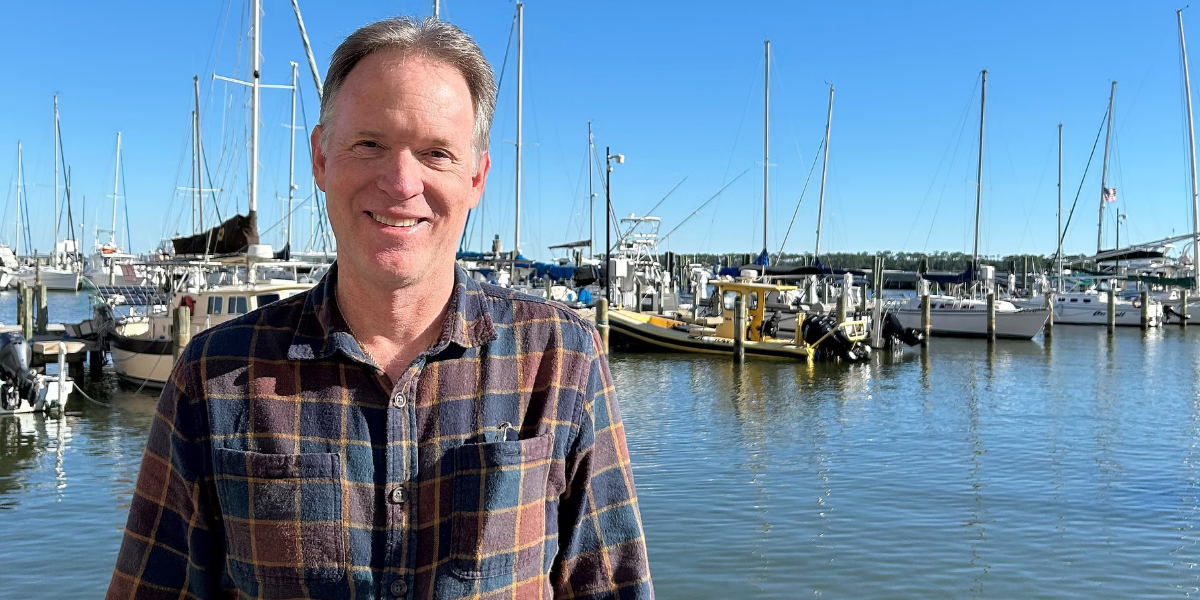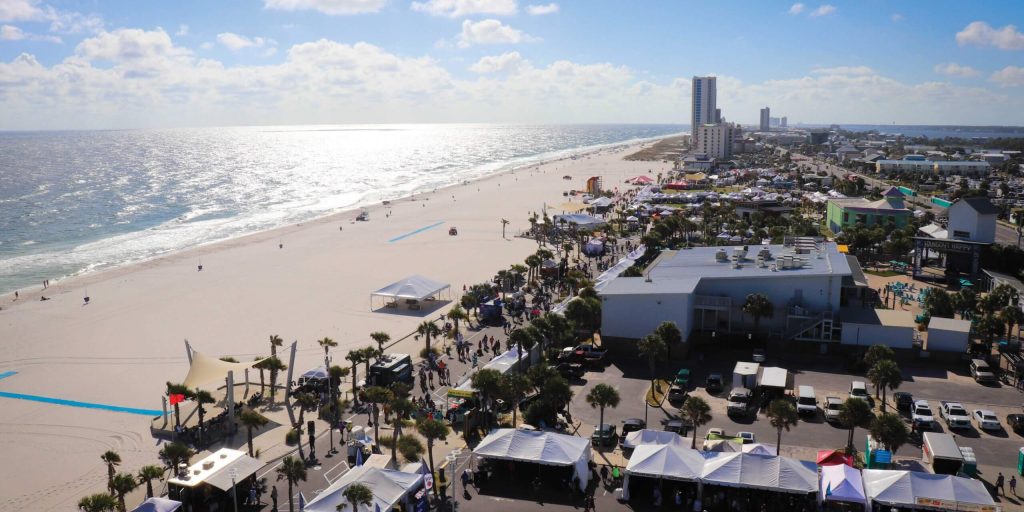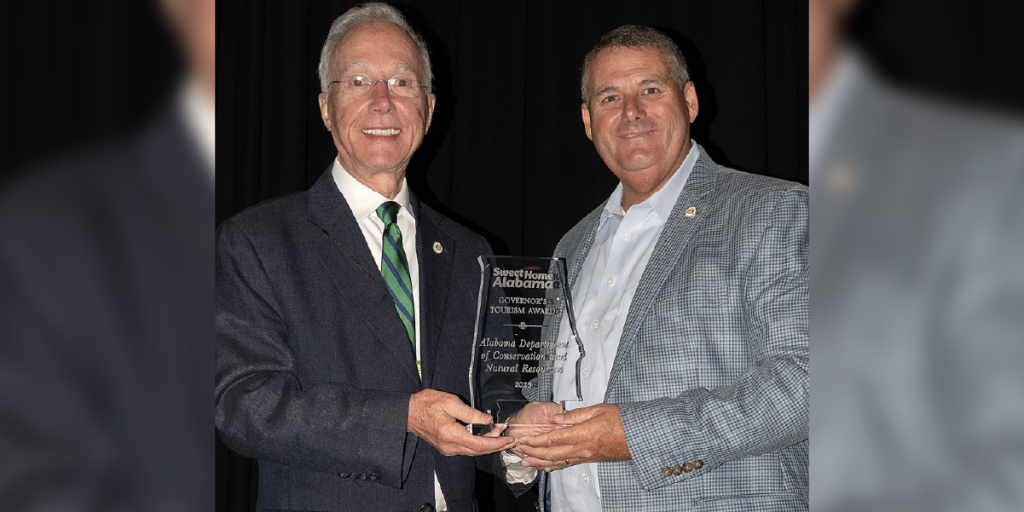After being part of an internal team to make Alabama’s saltwater fishing among the best in the nation for more than 27 years, Kevin Anson was recently promoted to Director of the Alabama Department of Conservation and Natural Resources’ (ADCNR) Marine Resources Division (MRD).
Anson assumes the leadership role previously held by Colonel Scott Bannon, who retired after 28 years with MRD, the last eight years as Director.
“I plan to continue what Scott has done in making sure our fisheries are healthy and there’s as much access as possible for folks,” Anson said. “We will address issues when they arise and when data shows we need to make a change.”
Conservation Commissioner Chris Blankenship said Anson brings a wealth of experience to the Director’s position.
“Having served as Marine Resources Director before I became Commissioner, I know how important this position is to ensure that our great coastal resources thrive to the benefit of all Alabamians,” Commissioner Blankenship said. “I feel confident the future of our bountiful inshore, nearshore and offshore fisheries, both recreational and commercial, will be in good hands with Kevin’s leadership.”
Even though Alabama has the shortest shoreline on the Gulf at just 53 miles of the 607 miles along the Gulf of America, Anson said the state has one of the most productive habitats in the world for a wide variety of wildlife and fish species in the Mobile-Tensaw Delta, which encompasses 260,000 acres in Baldwin and Mobile counties.
“That comes down to the Mobile Delta with all that fresh water coming down,” Anson said. “As long as we can keep it clean and not heavily nutrient-loaded, that will be in our favor. We can use that to our advantage in managing the resources here. That’s the nursery that provides the great fishing we have here.”
Anson is a native of south Florida and graduated from Florida Atlantic with a degree in anthropology. He continued his education at Auburn University, where he earned his master’s degree in Fisheries and Allied Aquacultures.
He started his work career with a company based in Robertsdale, Alabama, that had a tropical fish hatchery there and shrimp and fish aquaculture farms in the country of Belize in Central America.
“I started out in the hatchery, and then I traveled near the end of my five-year tenure with them,” Anson said. “The last few years, I would travel back and forth to Belize to help with the management of the ponds for the production of shrimp, tilapia, Australian red claw crayfish and redfish,” Anson said. “The Australian red claw crayfish, they were trying to market it as a langostino substitute. The males would get up to 9 or 10 inches in length.”
Anson was hired by MRD as a Biologist II in August of 1998, primarily supervising the recreational data collection program for Alabama. He was promoted to Biologist III in 2008 and was then promoted to Fisheries Section Chief in 2011. Anson has served as the proxy state fisheries management agency representative for Alabama on the Gulf Council since 2008. The Gulf Council advises NOAA Fisheries on managing the federal fisheries in the Gulf of America.
During his time on the Gulf Council, Anson has participated in changing the management for Alabama’s iconic reef fish species, the American red snapper, from federal mandates to state management, which has been a huge success for the state’s private recreational anglers. Since 2020, Alabama has managed the red snapper fishery off the state’s coast, which has the largest artificial reef program in the world with more than 1,200 square miles designated for deployment of MRD-approved artificial reefs.
Under the current Alabama red snapper management plan, MRD monitors the recreational catch and adjusts the seasons accordingly. As of October 26, the harvest was estimated at 575,220 pounds with a 2025 harvest limit of 664,552 pounds. Anson said the recreational red snapper season started on May 23, the Friday before Memorial Day, with fishing seven days a week through June 30. On July 4, the season went to four-day weekends until September 2, when the season reverted to seven days a week.
“We will probably remain seven days a week through the end of the season,” Anson said. “Our harvest trendline is just like 2023 and 2024, with the current harvest estimate being a good bit below the allowance. We will more than likely make it (seven days a week) through the end of the year.
“It’s gotten a little harder to catch the fish you want. You may still catch a lot of fish, but they may not be as big as they have been. Some folks prefer to be able to go out and easily catch 8- to 12-pound snapper, and that has been a little more difficult to do in the last couple of years.”
Anson said when the fishery is harvested below the overfishing level and to the maximum level, it is considered at optimum yield.
“Returning to a longer season under state management, we have seen the average size decrease, especially on the public reefs closer to shore, but red snapper are still very abundant in our artificial reef zones,” he said. “You may just have to fish a little bit differently to catch the bigger fish.”
“Our (red snapper) stock is fantastic, and we believe it is self-sustaining at the level of harvest we have.”
Another success story is the rebound in the flounder population along Alabama’s coast. However, for the month of November, the flounder fishing season is closed to both commercial and recreational fishermen to preserve the pre-spawning stock that is in position to move offshore to spawn.
MRD believes that management measure, as well as raising the minimum size from 12 to 14 inches, contributed to the flounder rebound. But that’s not all, according to Anson. He said Alabama’s treasured Mobile-Tensaw Delta is another factor in the life cycle of many inshore and offshore fish species.
“We’ve also had better environmental conditions,” Anson said. “Better conditions for flounder for spawning and early survival success are to have cold winters, not severe cold, but a normal winter for cold with typical rainfall patterns. The Dauphin Island Sea Lab and University of South Alabama have reviewed our environmental data and trends for the last 30 or so years. MRD’s surveys and commercial fisheries program data enabled them to correlate increases and decreases in catch and harvest of southern flounder with patterns of river discharge and temperatures during the winter months, when larval flounder settle and grow in the northern Gulf estuaries.
“Other states have implemented similar regulations, and you can see that they have had improving flounder abundance.”
MRD also oversees the state’s commercial shrimp fishery. In an effort to increase the size of the market as well as prices for shrimp, a group of local shrimp processors is seeking to receive sustainability certification.
To assist with that effort, MRD will host two listening sessions this month to gather feedback on goals and objectives for the fishery to include a new draft shrimp fishery management plan currently in development by MRD. Participants in the Alabama shrimping industry and the general public are encouraged to attend the listening sessions. The same summary will be provided several times during each session to accommodate the schedules for those interested in participating.
MRD staff will present summary information about possible goals and objectives at each session, and attendees are invited to comment on the proposals as well as make suggestions about additional goals and objectives to be included in the plan. The first session will be from noon until 4:30 p.m. Wednesday, November 12, at the Bayou La Batre Community Center at 12745 Padgett Switch Road in Bayou La Batre. The second session is set for noon until 4:30 p.m. at the Gulf Shores Activity Center at 260 Clubhouse Drive in Gulf Shores.
Anson said the other four Gulf states currently have certification for their respective states’ shrimp fisheries. To attain the certification, the states are required to have and adhere to a shrimp fisheries management plan (FMP) and a strategic plan for the overall saltwater fisheries.
“The shrimp FMP specifies goals and objectives, and the strategies associated with each will be taken by the agency,” Anson said. “The goals and objectives within those two documents will be submitted for review by an external certification organization.”
After reviewing Alabama’s plans, the group will determine if they qualify for certification. Anson also said the certification gives customers who want to buy those shrimp more clarity and transparency in the buying process.
“The listening sessions are required as part of the certification process, and they are going to be an opportunity for the public to provide us ideas as to how to manage Alabama’s shrimp populations,” Anson said. “We will review the comments we receive to see if they are appropriate to include in a plan.”
Anson said he is taking the reins at MRD when the fisheries are in good shape overall.
“Scott did a very good job as Director,” Anson said. “We have accomplished quite a few positive things during his tenure. When we decide to do something with a goal in mind, I think we have come close to meeting those goals for sure. I plan to continue what Scott has done to make sure our fisheries are healthy.”
David Rainer is an award-winning writer who has covered Alabama’s great outdoors for 25 years. The former outdoors editor at the Mobile Press-Register, he writes for Outdoor Alabama, the website of the Alabama Department of Conservation and Natural Resources.













